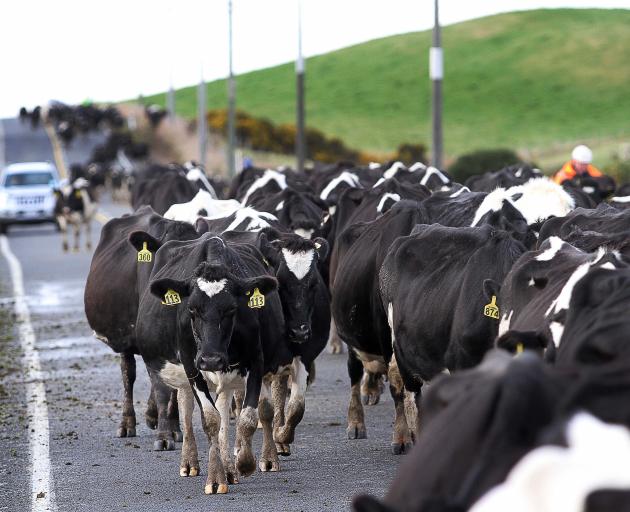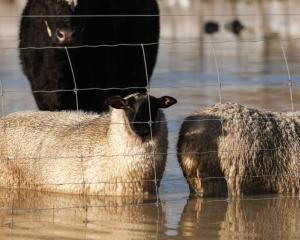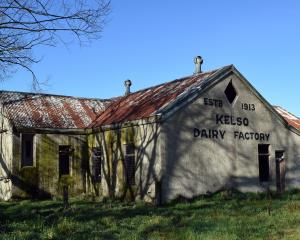
Early preparation is important, as is clear communication with your team regarding your plans and expectations.
Careful consideration must be given to animal movements, and all farm equipment and machinery should leave the farm in a clean and disinfected state to manage health and biosecurity risks.
Set up for success
Ensure sharemilker/contract milker contracts are signed by both parties and a farm inspection with the new farm owner, incoming and outgoing sharemilkers, farm manager, and farm adviser has been planned.
Determine your staffing needs for your new farm, start recruiting for required staff, and ensure signed employment agreements are in place, alongside signed service tenancy agreements for any employees who will live on-farm.
Ensure anyone coming on to the farm has not been overseas in the past seven days to reduce the risk of introducing exotic organisms, especially if they have been travelling to countries with foot and mouth disease (FMD) or have been in contact with FMD-susceptible animals (e.g. farmed or wild cattle, sheep, goats, pigs, deer, llamas, alpacas).
Communicate regularly with the people on your existing farm and the people who will be on your new farm about your plans, including key dates, and information.
Ensure staff have enough time to be prepared, pack and clean in the weeks leading up to moving. If necessary, adjust rosters and hours of work.
Get in touch with your insurer well before the move — there might be more things to discuss than you think.
It is a good idea to know the physical address, building details, any plant or machinery details, and the details of your sharemilking or contract milking agreement if applicable.
Contact your utility providers (e.g. power, internet, etc) and ensure you will be disconnected and reconnected on the right dates. Take and record final power meter readings for all houses at both properties.
Farm owner responsibilities
• Ensure employees leave houses clean and tidy. Complete a house inspection for any maintenance required on the current farm by the end of April and arrange for any repairs and upgrades required. Check you comply with healthy home standards.
• Complete a final house inspection with the existing tenant (sharemilker and/or employees) as soon as houses are vacant.
• Consider whether drug testing of houses will be required.
• Confirm with departing and new tenants their departure and arrival times so there is no cross-over between parties.
• Check with your insurer what obligations you have in terms of inspections and what, if any, impact this could have on your insurance cover.
Sharemilker/contract milker responsibilities
• Ensure your own house and employees' houses have been left in a clean and tidy state to the standards agreed in the contract.
• Consider whether drug testing of house/s will be required. If yes, arrange contractors and discuss with the farm owner.
• Complete house inspections with employees and then the farm owner as soon as houses are vacant, and complete house inspections prior to moving in on a new farm.
• Immediately discuss any issues with the farm owner, agree a plan, and document it.
Contract obligations
Ensure all body condition score (BCS), pasture cover targets or supplements on hand will be met as per the contract on takeover date.
If they are not going to be met, have a proactive conversation with the other party as to what arrangement can be made to compensate.
• Obtain third-party advice if required to reach an agreement.

• Refer to your contract, which should clearly show the exact amount of feed required on hand as well as the process to follow if the actual feed inventory is different to this.
• Ensure calves are fully weaned and are getting their daily requirements through grazing pasture prior to moving them off-farm.
• Winter and heifer grazing contracts should clearly set out the roles and responsibilities of the animal owner and the grazier, including weight targets, feed management, animal health and transport.
Understand new resource consent management requirements of new property (e.g. recording monthly water use, completing compliance forms for the environment).
Finalise and/or update rural supplier accounts.
Update farm policies and procedures for the new farm. The ones that are especially important to complete early are:
• emergency plan;
• farm rules;
• map of the farm identifying risk and no-go or limited-go zones;
• risk assessment — key risks and how will you manage them;
• how your farm team will communicate, including about health, safety and wellbeing;
• maintenance register.
Stocktake
• Record a stocktake of plant, machinery and supplies you have on your farm currently if relevant, note if any maintenance is required, and arrange for that to be done. Determine what equipment and supplies you will need to complete your new contract.
• Plan a timeframe for purchases of things you will need and arrange for them to be delivered to your new address.
• Keep a record of these for insurance purposes and ensure higher-value items are specified on your policy.
Farm equipment and machinery
• Clean and disinfect vehicles and machinery thoroughly to reduce the risk of spreading diseases, pests and weeds.
• Clean, and then disinfect, any equipment that is used in or on animals, for example drenching equipment.
• Fix any maintenance issues that are your responsibility. If they are not your responsibility then ensure whoever it is knows what needs to be done, in writing.
• Ensure effluent infrastructure is left as you found it, and/or is left according to your contractual obligations (e.g. effluent pond is required to be no more than one quarter full of effluent as at June 1). If this is unlikely to be achieved, have a proactive conversation with appropriate parties.
• Clean the sheds and plant appropriately. Clean the dairy shed to a high standard of cleanliness. This means all surfaces, vats, pipelines, etc. Use only approved products.
Communicate with contractors
• Ensure you have clarified what it is you need/want the contractor to do. Make it clear where they will be going/working and advise them of anything they would not expect that would be a risk to them.
• Let them know of other on-farm activity that could pose a risk to them. Advise them of farm rules (e.g. speed limits) and expectations of behaviour and of any relevant emergency procedures.
• Make sure you have agreed your costs and have a written document of expectations. It is helpful for both parties to have an electronic copy and mark-up of a farm map.
— DairyNZ
















